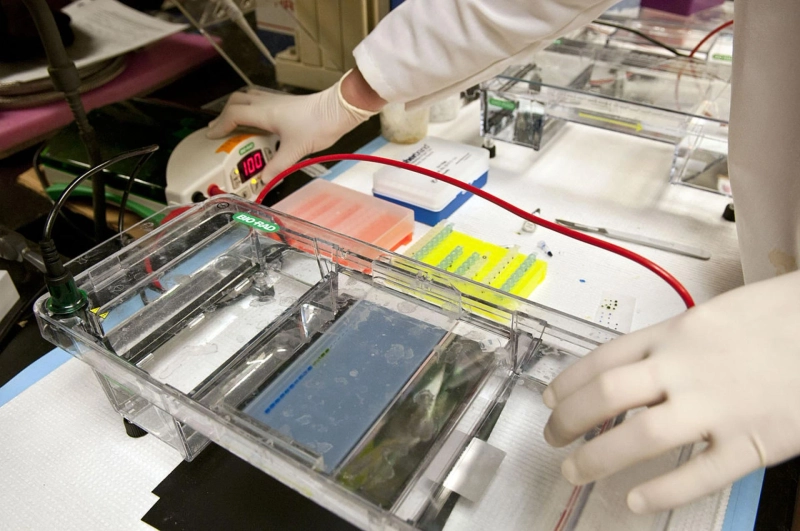When a mixture of charged molecules is subjected to electrophoresis, they are separated by size when exposed to an electric field. Just as crucial as estimating the molecular weight of any other macromolecule put through Electrophoresis is the precise measurement of RNA species' sizes. An RNA sample's electrophoresis is compared to molecular weight standards to achieve this. The successful electrophoresis of RNA requires two steps: first, the RNA is denatured before loading the gel, and second, conditions are provided during the electrophoresis to sustain and maintain the denatured state. When gels are poured thinly and run at low voltage, these techniques will guarantee that like species of RNA co-migrate and the best resolution is attainable.
The size range of the RNAs to be separated determines the choice of denaturing solution and gel matrix, and formaldehyde is the most widely used RNA denaturant for agarose gel Electrophoresis. Nucleic acids are seen in agarose gels using a variety of gel staining procedures, including ethidium bromide, SYBR® green, SYBR® gold, SYBR® safe, GelStar®, silver staining, acridine orange, and methylene blue. However electrophoresis gel boxes and power supply must be used and maintained correctly at all times.


